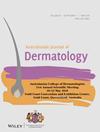Dermoscopy of Scabies: Utility of Polarised and Ultraviolet-Induced Fluorescence Examination in Fair and Dark Skin
Abstract
Introduction
Ultraviolet-based dermoscopy may support the recognition of scabies, yet neither accuracy analyses nor data on skin of colour are available. The aim of this multicentric observational retrospective was to investigate the diagnostic accuracy of polarised and ultraviolet-induced fluorescence (UVF) dermoscopic examination in both fair and dark skin, also assessing possible differences according to the skin tone.
Methods
Consecutive patients with a diagnosis of scabies were eligible. All the images were randomly evaluated by two independent experienced investigators to identify scabietic findings reported in the literature. Interobserver agreement was evaluated for both polarised and UVF dermoscopic pictures through Cohen's kappa coefficient, while Fisher's exact test with p-value set at 0.05 was used for comparative analyses between the two settings.
Results
A total of 97 lesions from 43 patients (21 with fair skin and 22 with dark skin) were included. The comparative analysis highlighted a superiority of UVF dermoscopy to detect the burrow (p = 0.003) and scabietic eggs (p = 0.012) in skin of colour, while polarised dermoscopy was more accurate to show the mite in fair skin (p = 0.042). Additionally, a general higher accuracy of both settings in light phototypes was also found, with a higher prevalence (p < 0.05) of typical scabietic findings (i.e., serpiginous white tract, ‘triangle’ sign and grey-brown outlines of the burrow for polarised dermoscopy and green dot for UVF dermoscopy) compared to dark skin. Kappa values were 0.87 and 0.83 for polarised and UVF-dermoscopy, respectively.
Conclusions
UVF dermoscopy improves the recognition of scabies, though it should be considered complimentary to polarised light dermoscopic examination to increase diagnostic performance.


 求助内容:
求助内容: 应助结果提醒方式:
应助结果提醒方式:


